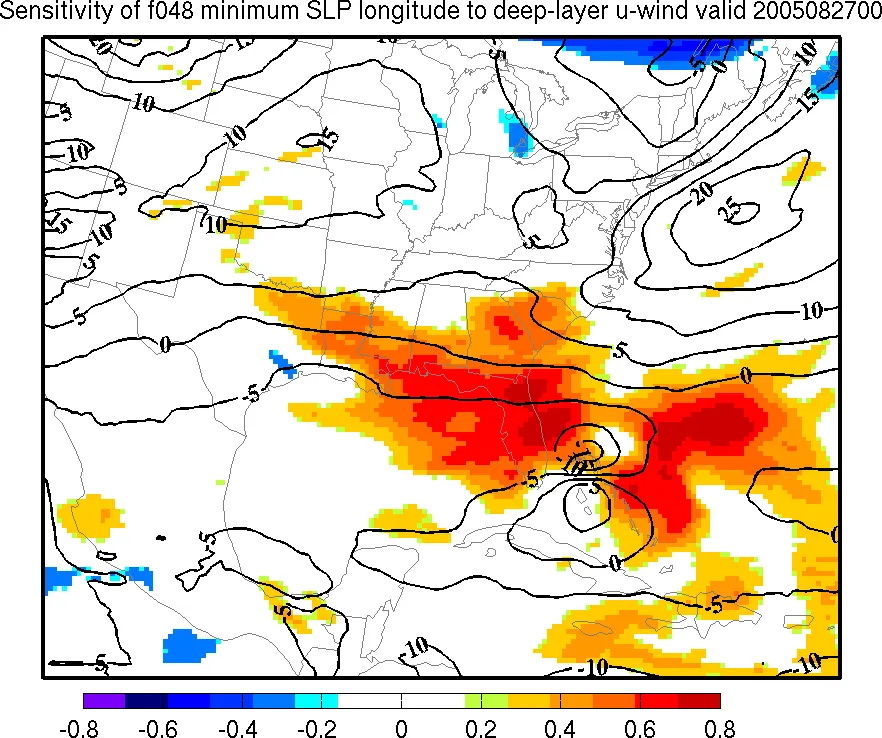Forecast sensitivity analysis
Forecast sensitivity analysis provides an objective means of evaluating how initial condition errors affect a forecast and where to gather additional observations to reduce forecast errors. Most sensitivity studies use the adjoint of a linearized forecast model to determine the gradient of a forecast metric with respect to the initial conditions. Adjoints suffer from a number of difficulties including coding, linearity assumptions, and moist processes. Ensemble-based sensitivity analysis provides an attractive alternative to adjoint-based methods because it combines data assimilation and sensitivity analysis in a consistent manner. This image illustrates the effect of zonal winds aloft on the position of Hurricane Katrina.
Ryan Torn torn@atmos.albany.edu

Early Publications:
Torn, R. D., 2010
Ensemble-based Sensitivity Analysis applied to African Easterly Waves. Weather and Forecasting, 25, 61-78, doi:10.1029/2008JD011375Torn, R. D., 2010
Performance of a Mesoscale Ensemble Kalman Filter (EnKF) During the NOAA High-Resolution Hurricane Test. Monthly Weather Review, 138, 4375-4392, doi:10.1175/2010MWR3361.1